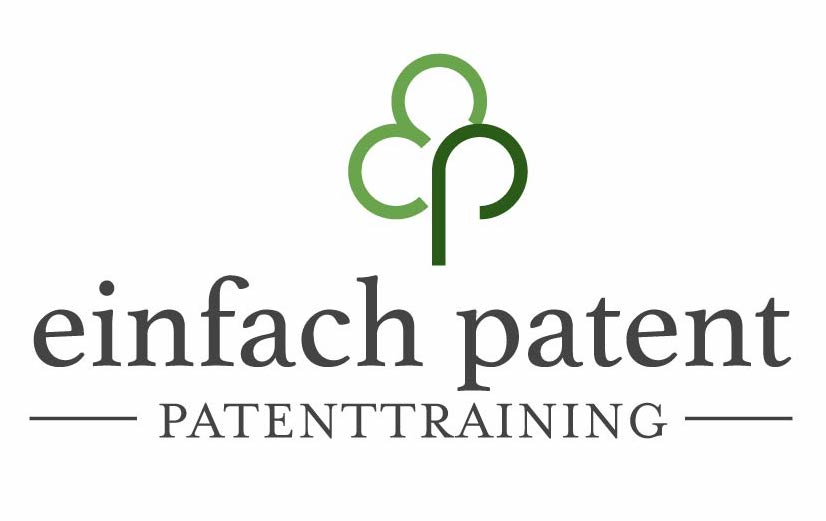This article is about how IP can become visible across the company.
About food for thought. About my experiences. And about a holistic view of the topic.
I mainly focus on patents because they (often) affect the largest target group in the company and because (often) the most money is spent on patents. I could have narrowed it down more and called it “Patent Awareness” – but these terms are not so common. Ultimately, however, many of the things I am talking about can also be transferred to other intellectual property rights. Because: IP of course affects even more than patents, e.g. trademarks and designs, plant variety protection, semiconductor protection, copyright, trade secrets, geographical indications of origin, etc.
How a lack of awareness destroys IP value
“Patents? The patent department does it for us.”
A harmless sentence. And an expensive mistake.
As long as IP (Intellectual Property) is considered a niche topic, many things remain invisible:
– Risks that are not recognized.
– Technical ideas that get lost in day-to-day business.
– Knowledge about IP that is not shared.
Often this is exactly what happens:
Many ideas disappear in a drawer – they don’t even reach the patent department.
Others are shown externally before anyone has recognized their protection value.
And when people ask later: “Have we registered something?” – it’s usually too late.
IP awareness does not mean that all employees can declare patents.
It means: IP is taken into account. In everyday life. 𝐈𝐧 𝐌𝐞𝐞𝐭𝐢𝐧𝐠𝐬. In decisions.
This is where valuecreationbegins.
Or it fails to materialize – even though the conditions would be there.
IP Awareness means:
IP (patents) is/are taken into account. In everyday life. In Meetings. In decisions.
Who actually needs IP awareness and why?
“Our people know that patents exist.”
Maybe.
But do they also know when they become important in everyday life?
IP Awareness is not a one-size-fits-all event.
What a developer needs to know is something other than what is relevant to executives, sales, or purchasing.
A few examples:
– R&D needs a sense of when a technical solution may be protectable (before it is shown) and when you stumble across a possible IP infringement.
– Procurement must know what risks can arise from license agreements or infringements of intellectual property rights.
– Marketing should understand what you can and can’t say about features.
–Executivesneed to keep an eye outfor whether teams recognize IP opportunities at all – or systematically overlook them.
IP awareness iscontextual.
If you train everyone with the same content, you don’t create awareness, but overwhelm.
Better questions would be:
– What does this role need to know about IP in order to make good decisions?
– How do I recognize IP-relevant situations – without being an absolute expert myself?
Good awareness strategies differentiate.
And they connect. This is because IP often affects precisely those interfaces where no one is responsible or feels responsible.
IP awareness is contextual.
The system decides: Why individual measures do not create awareness
“We did an IP webinar last year.”
“People know – it’s all on the intranet.”
Does this sound familiar?
Many IP managers invest a lot of energy in training, information emails or awareness campaigns.
And yet, unfortunately, hardlyanything changes.
The reason is simple:
Awareness is not created through information, but through integration.
If IP is only treated as a topic “to be poured over”, this creates compulsory knowledge at best.
But what is really missing is anchoring in everyday life:
– In project processes.
– In role descriptions.
– In management discussions.
IP awareness is not atask for thepatent department alone.
It is a systemic challenge:
If structures hide IP, even the best training does not help.
The crucial questions are:
– Where is IP visibly anchored in the system today – and where is it not?
– Are there processes in which IP would have to be considered – but is not?
– And how can IP awareness be kept alive in the company – beyond one-off measures?
Only when the system follows suit does IP become a real corporate asset.
Before that, it remains: special knowledge in the supporting role.
Only when the system follows suit does IP become a real corporate asset.
Where does the organization stand on the awareness scale?
In conversations with companies about their current challenges with IP, about structures and procedures, I noticed something again and again:
There are different attitudes and role understandings that strongly influencehow IP is lived in the company.
This is particularly visible between the patent department, R&D and management.
Over time, I recognized a pattern – and developed a model from it that can be found in many organizations:
—
Stage 1: Distance and silo thinking
IP is separate from the core business.
The patent department works “for itself”, R&D does not see itself as responsible, the management ignores IP – consciously or unconsciously.
There is hardly any exchange.
Stage 2: Service Mindset
IP has become more visible. The patent department actively offers services, communicates and shows presence.
But: It often remains with the attitude “We are there – come when you need us.”
The responsibility still lies with “the others”.
Stage 3: Shared valuecreation
IP is no longer just support – but an integrative part of the strategy, the processes, the language.
All participants see themselves as partners in the creation of value.
It is no longer about additional work or “picking up” R&D – but about shared responsibility.
The patent department contributes its expertise, R&D its technical understanding, the management the strategic framework – equivalent, not hierarchical.
—
I see movement from level 1 to 2 in many companies – often triggered by the desire to receive more and better invention disclosures.
Then we work on visibility and communication – which is important.
But without a deeper mindset shift, it remains a “service offer” that must be actively advertised.
Shared valuecreationrequires more: trust, maturity – and sometimes a structural step. Above all, however, it needs a newunderstandingof cooperation.
It is important to me:
The model is not a judgment, but a tool for reflection.
Many organizations operate at multiple levels at the same time—depending on location, team, or division.
IP awareness develops in stages:
From silo thinking to shared value creation.
IP awareness with 3 pillars for more impact
IP awareness does not arise from a single training.
And it doesn’t stay through an intranet link or a campaign.
My thoughts and experiences on this:
IP awareness lasts permanently when three areas in the company interact.
1. Visibility – so that IP is perceived at all
If IP is not present, it is not taken into account.
Visibility means that the IP department can be experienced, approached and is perceived as relevant.
What works:
– Presence on the intranet, at project starts, team meetings, onboardings
– clear, accessible language
– Success stories, identification figures, recognizable contact points
– Regular offers, such as IP / patent consultation hours
Visibility is more than information. It creates attention and opens doors.
2. Knowledge – so that IP is understood, remembered and used in everyday life
IP can only be considered if it is fundamentally understood.
This basic understanding is key:
→ It explains why IP is relevant in the first place – and what is worth taking responsibility for.
→ It forms the basis for motivation, participation and risk awareness.
What works:
– Practical, transfer-oriented formats with case studies, thinking aids or small exercises
– Role-specific refreshers, regular
– IP basics as part of onboarding
Knowledge should be imparted in such a way that it is understandable – and can be connected to one’s own work.
This means: not abstract, but concrete. Not instructive, but useful.
Anchored knowledge creates understanding and opens the way to independent action.
3. System integration – so that IP is consistently considered
What is not provided for in the process is rarely done consistently.
Therefore, IP must be explicitly integrated into structures, routines and roles.
What works:
– Fixed “touchpoints” in the course of the project (e.g. gates, kick-offs, releases)
– Executives who actively address IP issues
– IP Ambassadors who are visible in Teams
– Checklists with IP questions
System integration means that IP is no longer an additional issue, but a component of corporate reality.
3 pillars of IP Awareness:
Visibility generates attention.
Anchored knowledge generates understanding.
System integration creates behavior.
IP awareness is not a sprint. But a way.
In conversations with IP managers, I often hear this sentence:
“That all sounds good in theory – but it’s not so easy to implement here.”
And honestly:
I understand that.
Because I also see in many companieshow difficult thispath sometimes is.
The tour has other topics.
Developers don’t have time for seminars.
You make an effort – and then come: nothing. Or at least not what you had hoped for.
I believe:
IP awareness is not a sprint. It is a marathon.
And sometimes it feels like a trail run in the fog.
You try things out.
Some things work well – others don’t (yet) fit the culture, the language, the timing.
Sometimes there is a sudden increase in invention disclosures and then again a decrease that is frustrating.
That’s normal.
It’s not about arriving right away, it’s about getting on your way in the right direction.
Because IP awareness is nota measure,but a cultural change.
And it never runs in a straight line.
From my point of view, it is important:
-Hang on.
-Adapt.
– Treat yourself and others in a friendly and realistic way.
Something is moving, even if it is not immediately visible.
And the greatest progress is sometimes: an attitude that remains –
even if everything else has not yet been completely found.
Conclusion: IP awareness is a development process
If you want to create patent awareness in companies, you are on the right track. After all, patent awareness will strengthen the company, its innovations and ultimately its market value.
But how do you do it “right”?
Take a look at the various adjustments in the company: Where do you currently stand and what could you change?
Think of it as a process that develops slowly. Be patient. Everything doesn’t have to be 100% ready tomorrow (that will never be possible anyway).
If you need support , please feel free to contact me. I am happy to be your reflection and thinking partner in this matter. Especially when it comes to knowledge building, I can help you. My trainings are an ideal way to get started. Because for me, it’s not just about imparting knowledge, but also about using individual examples, exercises and questioning techniques to set processes in motion that can have a lasting effect . Feel free to book an appointment for an introductory meeting (click here to book).



0 Comments